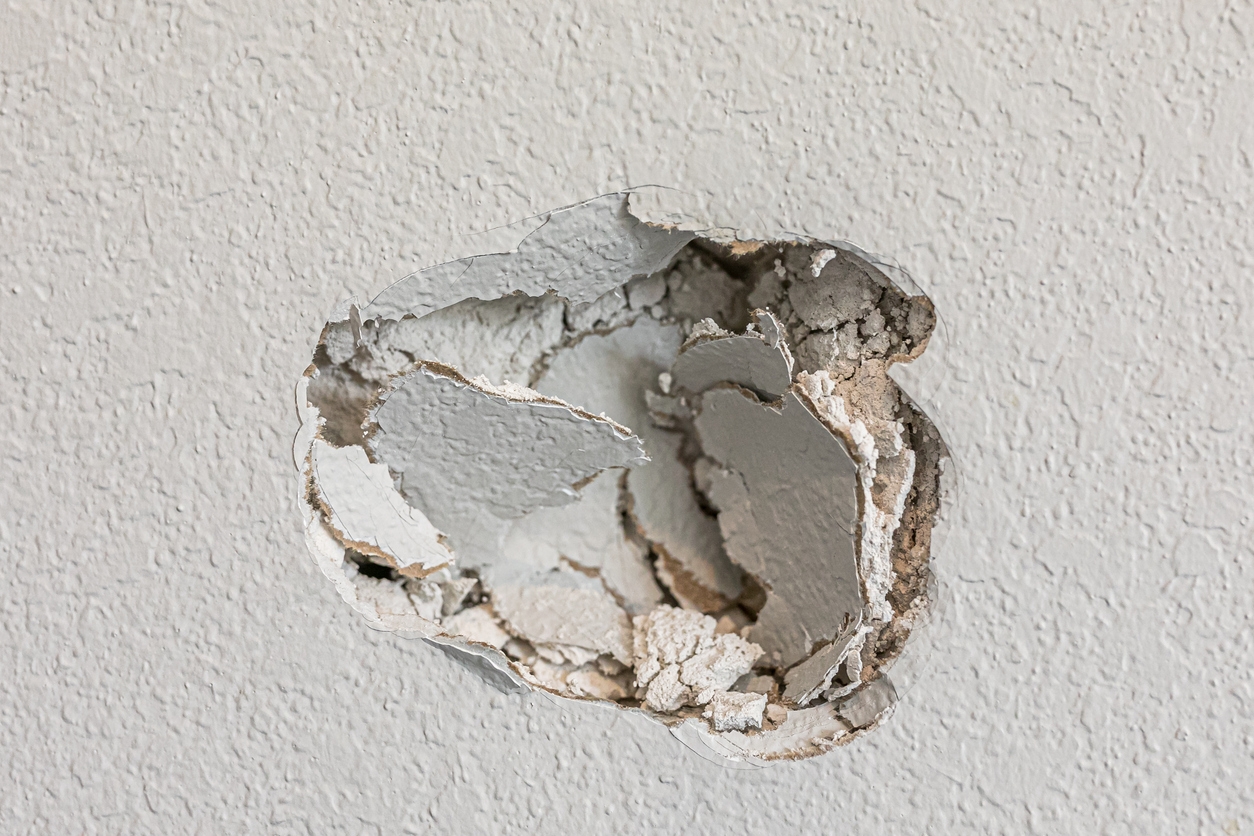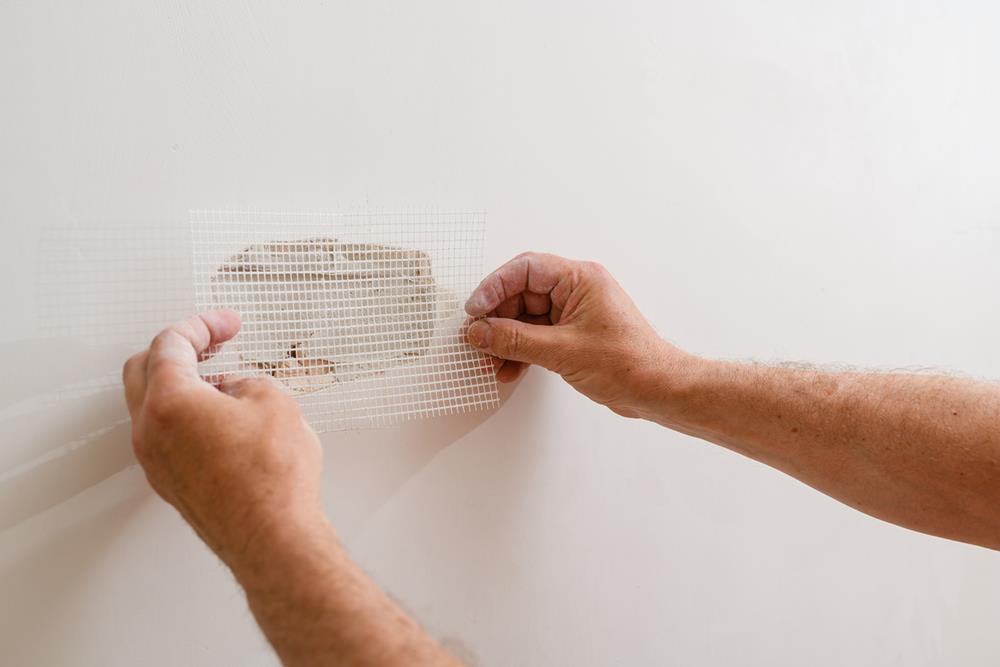Drywall is an important com of most Livermore, Dublin, Mountain House, Pleasanton, San Ramon, and Tracy area building structures. It enhances your home’s structural support and also provides other advantages such as sound insulation and fire resistance. It’s also a customizable feature that adds to the aesthetics of a structure. Since it’s durable and comes at a reasonable cost, it’s a popular material in modern construction.
However, these advantages also mean that drywall repair is an essential aspect of home maintenance. Drywall damage can compromise the robustness of any room. It can lead to water damage, structural damage, electrical problems, and mold growth among other issues. While it might be possible to deal with drywall repair yourself, the situation might call for professional drywall repair services.

So, should you go for a DIY repair project or call in the professionals? The right answer will depend on various factors. If you’ve noticed some drywall damage or want to plan ahead, it’s best to understand drywall damage. The discussion below will hopefully help us know more about drywall and how to deal with it:
Understanding Drywall Damage
There might be a few reasons why your drywall is damaged. Let’s first take a look at the types of drywall and then the reasons why they might suffer damage:
Types of drywall
The kind of drywall you have can influence your repair decision. Here are some of the most common types to expect:
Regular drywall (standard gypsum board) – This is a popular type of drywall that’s available in several sizes and thickness ranges. It’s suitable for the interiors of both commercial and residential buildings.
Moisture-resistant drywall – Some may refer to these as greenboard or blueboard drywalls. They’re designed to resist moisture, thus preventing mildew and mold growth. Most structures will have such drywall in areas that have high humidity such as the kitchen and bathrooms.
Fire-resistant drywall – These are usually classified into Type C or Type X categories. They add fire-resistant properties to the building. Builders will usually add such drywall panels to the places where fire protection is required under the local building codes. These include the garage, fire-rated ceilings, fire-rated walls, near furnaces, etc.
High-impact drywall – This type is the usual choice in commercial buildings such as schools. It’s more robust in design, which means it can stand a higher impact and rough usage.
Soundproof drywall – Also called acoustic or soundboard drywall, this type has the potential to dampen sounds. If noise reduction is essential in a building, this is a likely choice. The preferred areas for such drywall are usually bedrooms, shared walls, and home theaters.
Paperless drywall – Regular drywall usually consists of gypsum and paper. The paperless version uses fiberglass instead. This replacement makes the drywall less vulnerable to moisture, mold, and other forms of damage. It’s a good choice for extra-humid areas such as basements or a bathroom with poor ventilation.
There are some other types of drywall, including flexible, lightweight, and eco-friendly options. Your building requirements will specify which type of drywall is appropriate in different places. If a special kind of drywall is damaged, it’s best to call in the top painting contractors Livermore provides.
The most common forms of drywall damage
You may notice drywall damage happening in the following ways:
- Tiny cracks on the surface at the points where the sheetrock panels meet
- Small scratches, dings, and dents from regular wear and tear (mostly through moving furniture, using door knobs, or hard use by kids)
- Deeper cracks extending into the paper of the drywall or along the length of the seam’s tape
- Water damage, when flooding or leaks cause holes in the drywall or lead to sagging, erosion, etc.
Assess the damage
Before deciding how to go about your drywall repair, assess the nature of the damage. It will help you calculate the estimated costs and risk level. The cost of exterior painting Livermore services can be significant, so a DIY project is a more logical solution to minor damages. On the other hand, you don’t want to take any chances when it comes to the structure of a building.
Here are some steps to assess the extent of the problem and make an informed decision:
- Look for the source of the damage; if it’s water-related, there might be a bigger problem under the surface
- Check for damage due to mold or moisture buildup
- Look for indentations, scratches, dents, holes, and other forms of damage around the area
Drywall damage can be deeper than you think. If a proper inspection reveals a lot of damage or hints of other issues, it’s probably wiser to call in the pros.
When to Call in the Professionals
If the drywall damage is minor and you have experience with such repairs, the DIY route might work. However, it’s best to call in drywall repair and painting experts in the following situations:
- The damage is extensive and somewhat complex
- There are some safety risks such as a compromised structure
- The drywall has large holes, gaping cracks, or complex textures
- You don’t have previous DIY experience with drywall
- The required repair needs immediate attention
- You don’t have the correct tools on hand
Benefits of Hiring Professionals
While DIY drywall repair might be cost-effective, there are times when hiring professional services has more advantages. Here are a few benefits to consider when you need professional drywall repair:
- They might fix the problem in a single visit, saving you time, money, and hassle
- The teams are usually reliable and experienced, which means they’ll do a long-lasting, stellar job
- Professional services might repair the damage so well that it’s unnoticeable
- They usually have the right tools on hand and know how to use them properly
- They will handle the cleanup
- Their work usually comes with a warranty
Give the help you deserve with a professional drywall repair services from Custom Painting, Inc.! Get in touch with us by phone (925-294-8062) or by sending us a message to request a free estimate.



